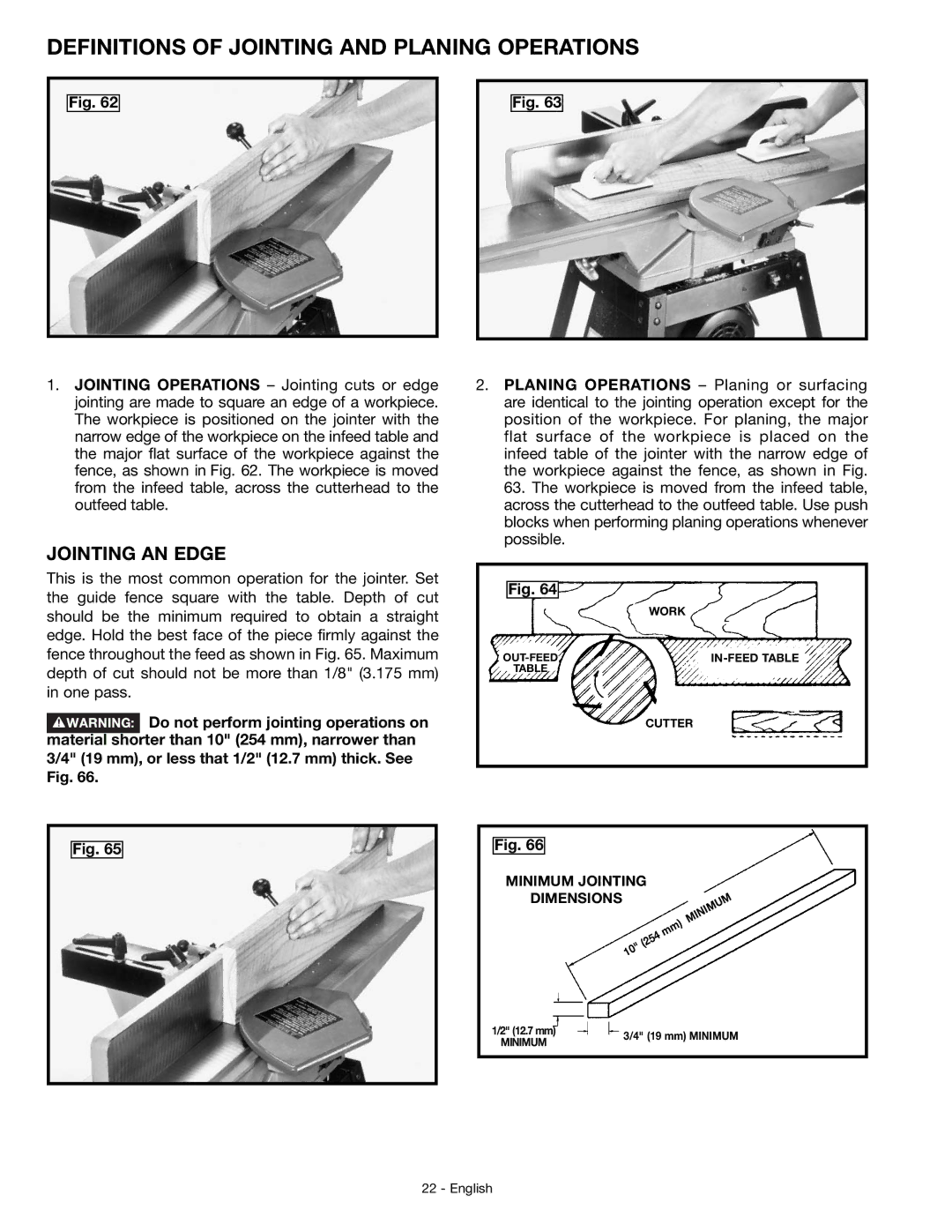
DEFINITIONS OF JOINTING AND PLANING OPERATIONS
Fig. 62
Fig. 63
1.JOINTING OPERATIONS – Jointing cuts or edge jointing are made to square an edge of a workpiece. The workpiece is positioned on the jointer with the narrow edge of the workpiece on the infeed table and the major flat surface of the workpiece against the fence, as shown in Fig. 62. The workpiece is moved from the infeed table, across the cutterhead to the outfeed table.
JOINTING AN EDGE
This is the most common operation for the jointer. Set the guide fence square with the table. Depth of cut should be the minimum required to obtain a straight edge. Hold the best face of the piece firmly against the fence throughout the feed as shown in Fig. 65. Maximum depth of cut should not be more than 1/8" (3.175 mm) in one pass.
![]() Do not perform jointing operations on material shorter than 10" (254 mm), narrower than
Do not perform jointing operations on material shorter than 10" (254 mm), narrower than
3/4" (19 mm), or less that 1/2" (12.7 mm) thick. See Fig. 66.
Fig. 65
2.PLANING OPERATIONS – Planing or surfacing are identical to the jointing operation except for the position of the workpiece. For planing, the major flat surface of the workpiece is placed on the infeed table of the jointer with the narrow edge of the workpiece against the fence, as shown in Fig. 63. The workpiece is moved from the infeed table, across the cutterhead to the outfeed table. Use push blocks when performing planing operations whenever possible.
Fig. 64
| WORK |
TABLE |
|
| CUTTER |
Fig. 66
MINIMUM JOINTING
DIMENSIONS
1/2" (12.7 mm) | 3/4" (19 mm) MINIMUM | |
MINIMUM | ||
|
